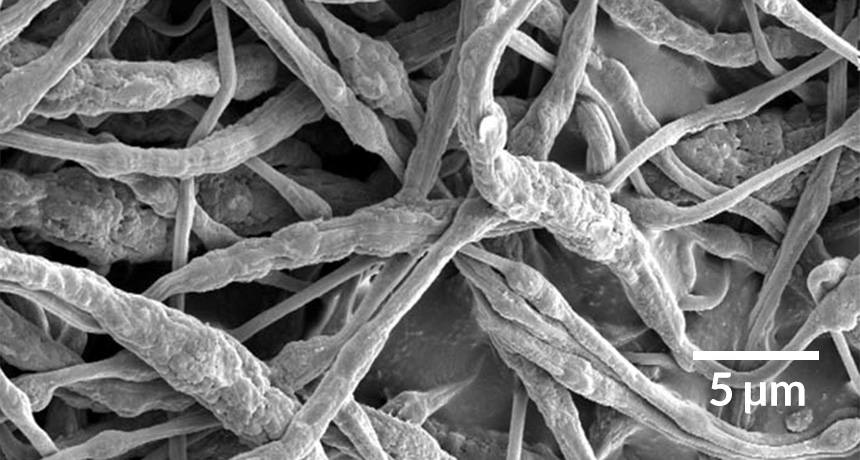New ‘smart’ fibers curb fires in lithium-ion batteries

Hoverboards and certain cell phones powered by lithium-ion batteries occasionally go up in flames. Scientists now have a new plan for squelching these fires before they flare out of control: incorporating a flame retardant in the battery that’s released if temperatures get too toasty.
Within lithium-ion batteries, ions travel between positive and negative electrodes through a liquid called an electrolyte. But commonly used electrolytes are highly flammable. And if a short circuit in the battery produces enough heat, the electrolyte can ignite.
Simply adding a flame retardant to the electrolyte makes the battery less efficient. So scientists from Stanford University created a “smart” sheet of tiny fibers containing flame retardant, which could be inserted between a battery’s electrodes, the researchers report January 13 in Science Advances.
Each fiber is reminiscent of an éclair filled with cream, consisting of a plastic shell surrounding flame retardant inside. Under normal conditions, the shell traps the flame retardant, so that it can’t spill out into the electrolyte. But if the battery heats up too much, the plastic melts and the flame retardant escapes.
In laboratory tests, the flame retardant was released into the electrolyte above 160° Celsius. And when the scientists attempted to ignite the electrolyte in the presence of the flame-retardant fibers, the fibers melted and released their contents, causing the fire to peter out after 0.4 seconds.